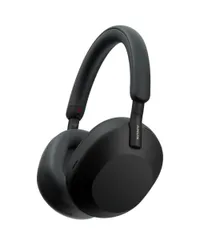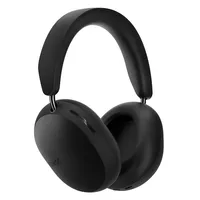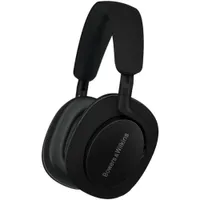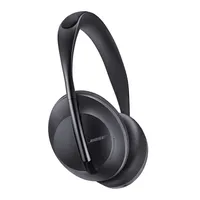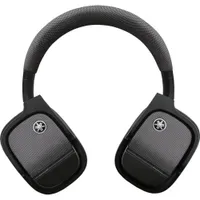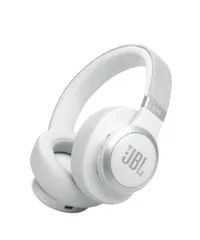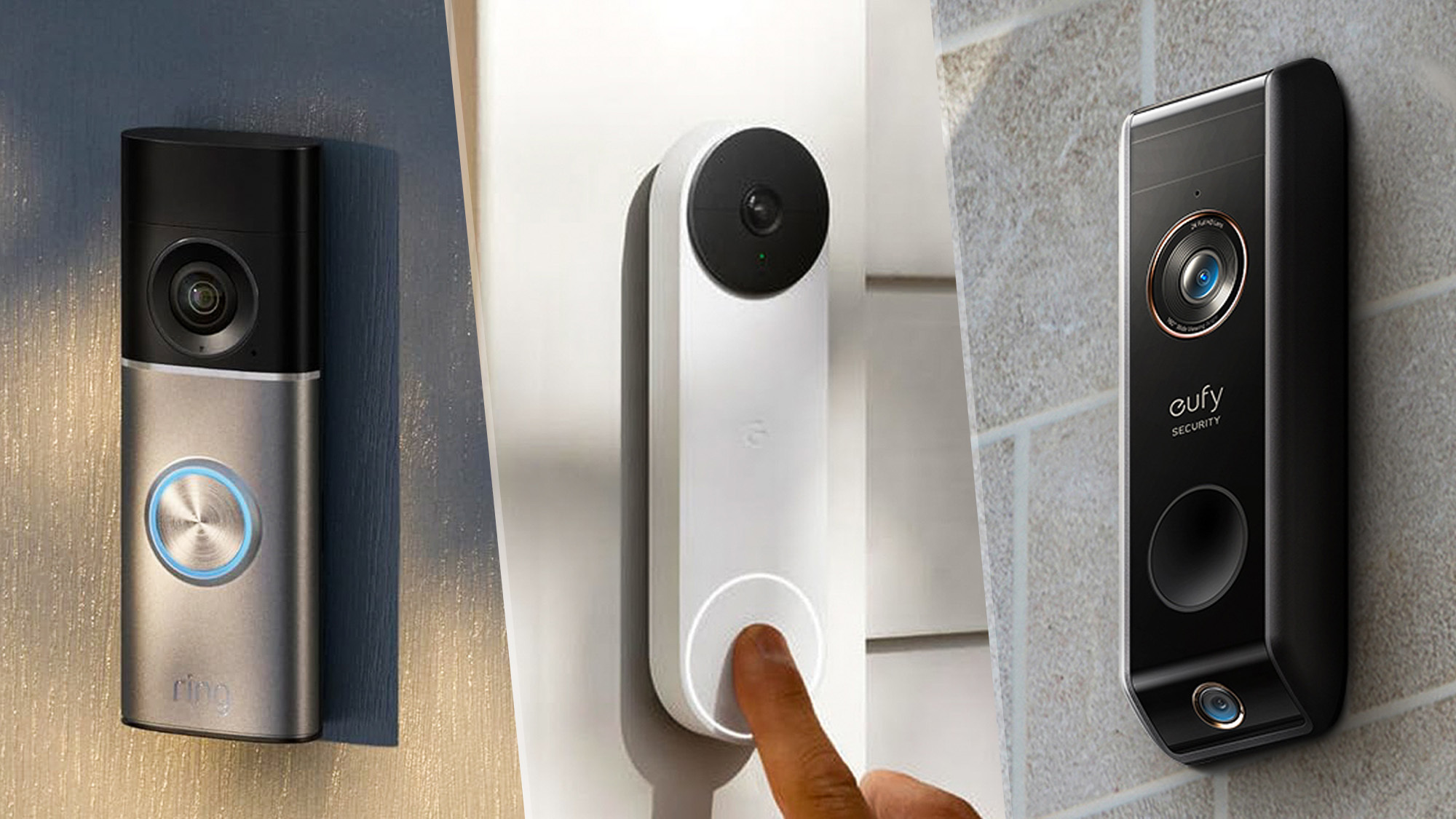The best noise-canceling headphones of 2025: Tested and reviewed
These are the very best noise-canceling headphones we've tested
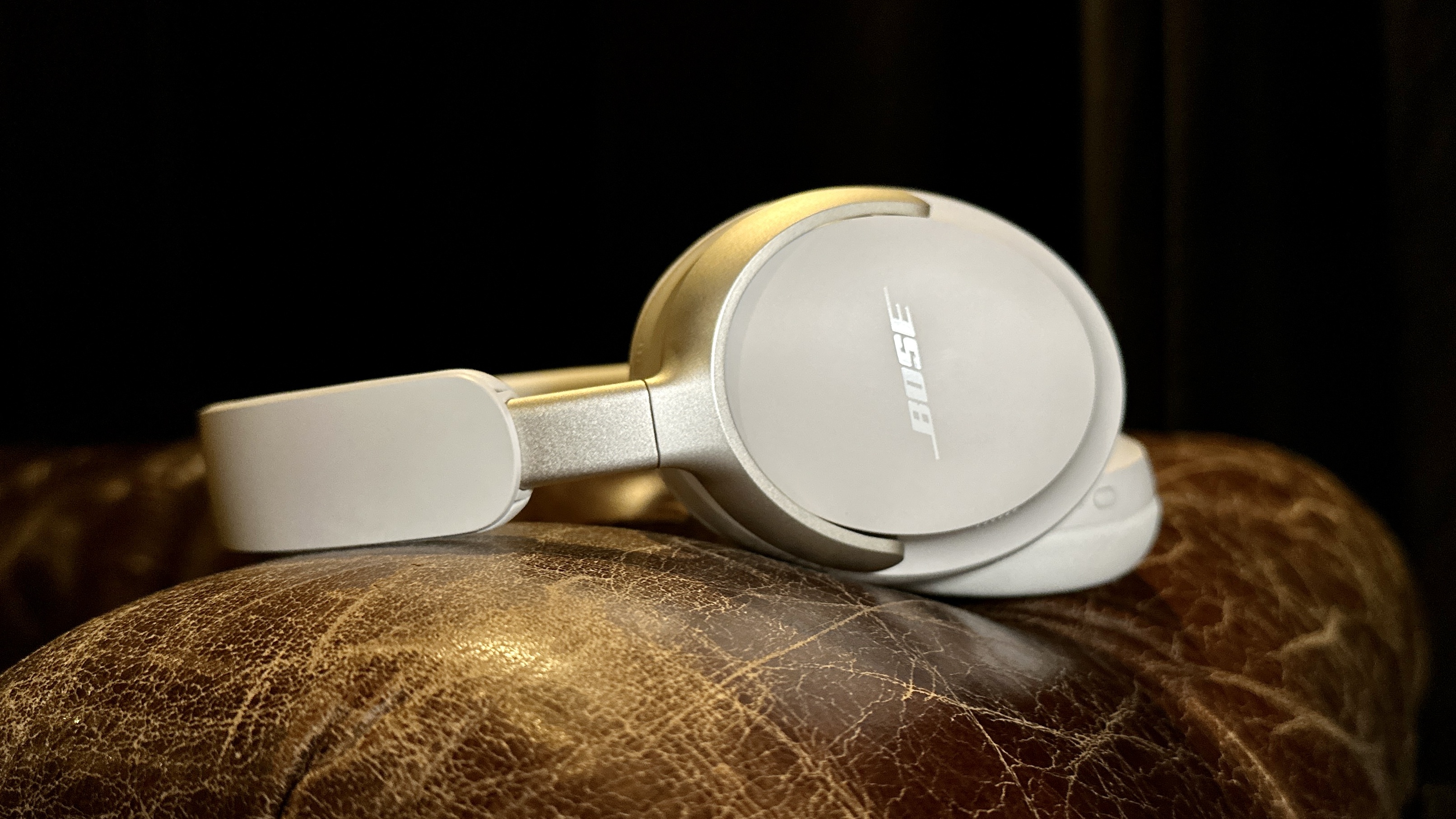
The endless wirr of airplane engines, the rumble of bus tires, the screeching of underground train brakes — the only thing that makes them all more bearable is a pair of the best noise-canceling headphones. Closing you off from the outside world and cocooning you in your music, they’re an essential part of any journey. Working out what pair of headphones to get, however, is often a very difficult task indeed.
My top pick are the Bose QuietComfort Ultra headphones. They don't just sound epic, but their noise canceling is the best I've ever seen. I've walked past busy building sites, on trains next to wailing babies and children and sat on rumbling buses with no noise coming through to disturb my peace and quiet. They've become my go-to headphones for when I leave the house. If those are little bit too much money for you, then there are the excellent JLab JBuds Lux ANC which bring some great sound quality to a much lower price point.
These are the best noise canceling headphones you can buy right now.
About the author

I oversee the audio content that goes up on Tom’s Guide, and maintain the site's buying guides for headphones, wireless earbuds, Bluetooth speakers, soundbars, and more. I have spent more than 20 years testing audio equipment for my own enjoyment, and was previously the audio editor for iMore. There's nothing more I love than jamming out to my favorite tunes on audio gear of different prices and sizes.
Best noise-canceling headphones you can buy right now
Why you can trust Tom's Guide
Best overall
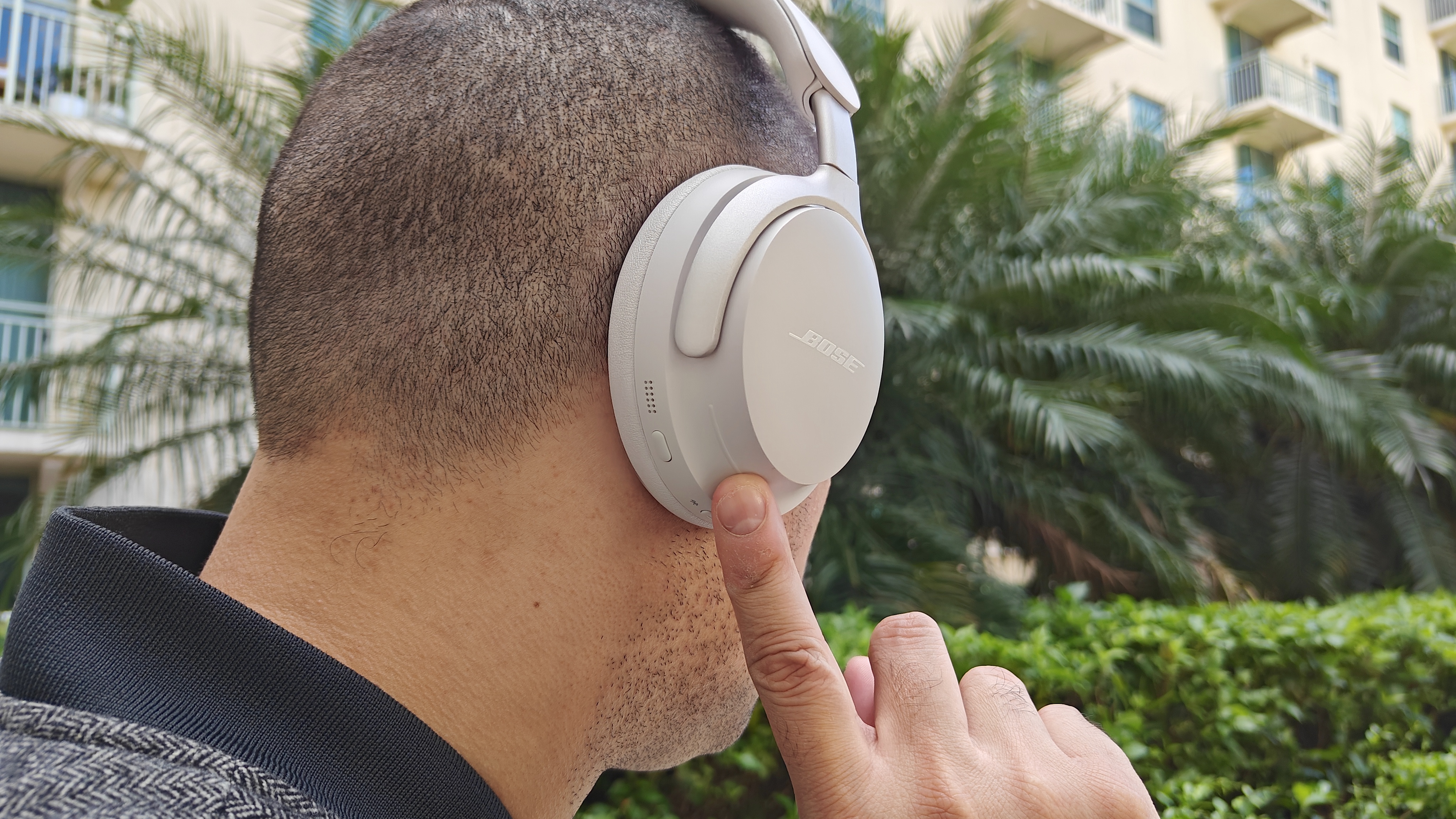

Specifications
Reasons to buy
Reasons to avoid
What about the QuietComfort Ultra Gen 2? The generation 2 QuietComfort Ultra Headphones are out now, and they'll get a place on this list — once we've finished the full review. Until we've got our final thoughts down, the 1st generation QuietComfort Ultra Gen 2 will remain our list toppers.
The Bose QuietComfort Ultra Headphones are the ultimate noise-canceling headphones. They have a permanent home in my backpack, for example. They make my bus journeys around the city more tolerable, let me focus on work if I head to a cafe or a library to work, and make trips on the train a whole lot easier. It’s all thanks to the ANC on board — and it’s Bose’s absolute best yet.
Slip the headphones on your head, and they activate with a symphonic stab. From there, Bose’s ANC algorithm kicks in, and blocks out all the noise of the environment around you. I found it almost like magic. I’ve used loads of different noise-canceling headphones, more than any one person normally would have done, and I was immediately taken aback by the silence afforded by Bose’s flagship headset. Play some audio and the outside world completely disappears — it’s utterly remarkable. Nothing else manages the same level of environmental silencing, and it’s the reason that they top the list here.
That noise canceling also allows you to really enjoy their deep, bassy sound. As much as I enjoy neutral and analytical sound signatures, the QuietComfort Ultra’s are comforting and warm, like a sonic weighted blanket. There is a dedication to bass here that’s smooth and forgiving, but they never give in to the ‘goodbye high-end’ pitfall that many warm headphones fall into. Instead, they’re still crystal clear, with plenty of clash and edge to cymbals. The mids are beefy and rich, with plenty of dimension to vocal parts and guitar lines. It’s a great sonic performance, and one that I’ve come to really enjoy.
Immersive Audio, the Bose version of Spatial Audio, isn’t my favorite way of widening music’s soundstage, and it tanks the battery when activated. The battery life isn’t incredible either, with the likes of the WH-1000XM5 managing more staying power than the Bose’s 24 hours.
In the end, though, the Bose QuietComfort Ultra top the list here because of their incredible noise-canceling performance. If you want to block out every ounce of the outside world, there’s really nothing better.
- Read the full Bose QuietComfort Ultra Headphones review
Best Under $100


Specifications
Reasons to buy
Reasons to avoid
You might think that you have to spend loads of money to get noise-canceling headphones, but that couldn’t be further from the truth. Case in point; the excellent JLab JBuds Lux, a pair of noise-canceling headphones that only cost $79. For the price, you won’t find a more comfortable, better-sounding headset.
One of the coolest things that our testing team loved about the JBuds Lux was the Spatial Audio support. That widened the audio of music over a range of different streaming services, and gave Dolby Atmos support for game consoles and other devices. The tester was so surprised by the Spatial Audio in fact that the review was put on hold while they showed it off to the rest of the team, who were equally impressed. Spatial Audio at this price is a massive bonus, and the fact that it’s so good is the cherry on top.
The battery life is another highlight of the JBuds Lux, which gives you 70 hours of battery life without ANC, amongst the very best on the list. If you turn the ANC on then that goes down to 40 hours, but that’s still more than enough to get you through any work day. Speaking of the ANC, we found that it managed to block out a surprising amount of environmental sound, working brilliantly for the bus, the train, or just walking down the street. They’re also really good for office use, making sure that loud, noisy AC units are blocked out and colleagues' keyboards melt away into nothing.
They’re comfortable to boot, and upon first look, you wouldn’t be able to guess that they cost far less than $100. There isn’t an included carrying case, which is a shame, but it’s more than likely a concession made to keep their price as low as it is. And ultimately, it's that super-low price that gets them a solid place on this list.
- Read the full JLab JBuds Lux ANC review
Best Alternative
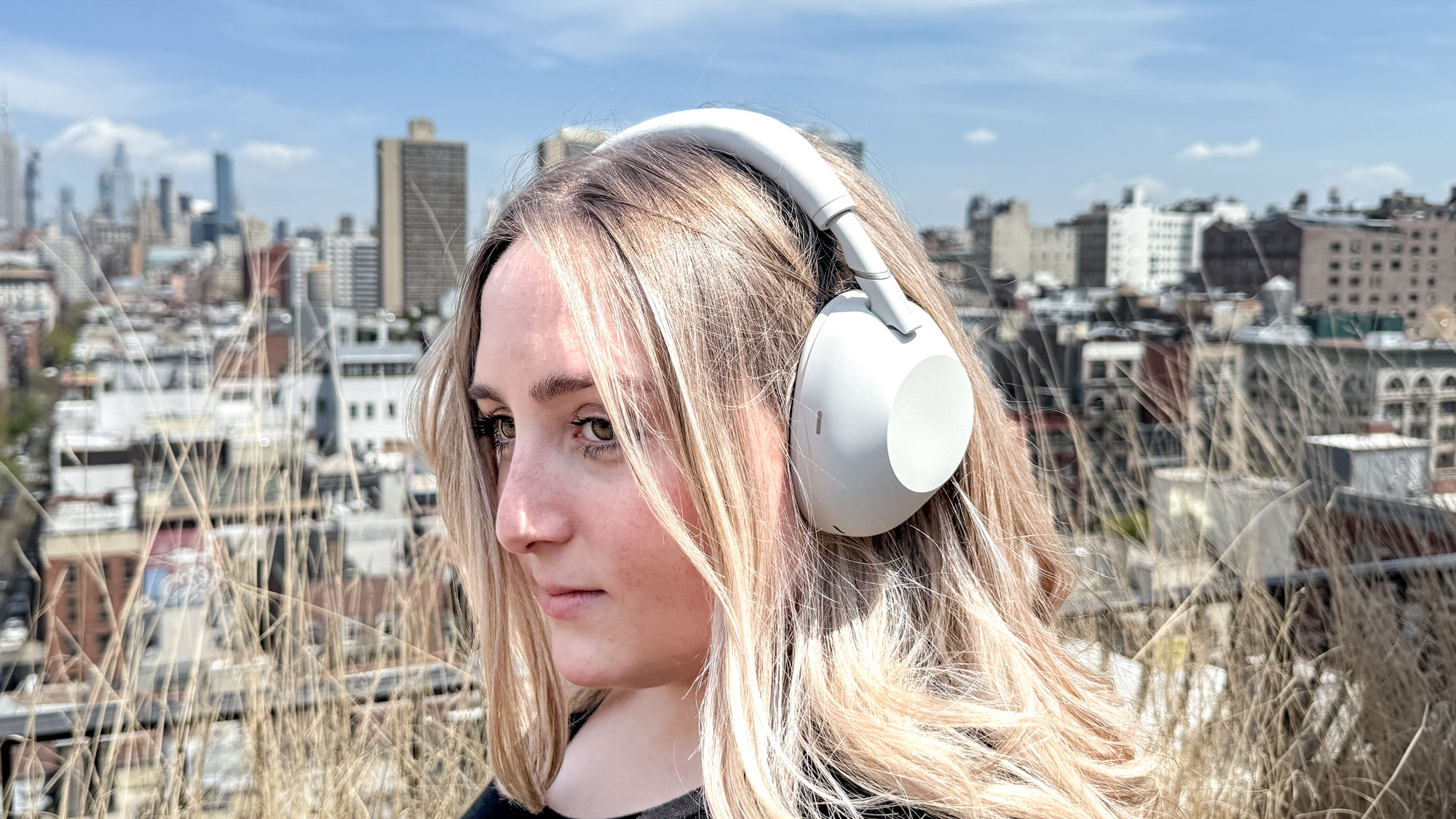

Specifications
Reasons to buy
Reasons to avoid
We’re now on the sixth iteration of Sony’s noise-canceling headphones, and they’ve been getting better with each new update. The XM6 improves on some of the biggest bugbears that we had with the previous model — they fold now, and the sound is better — while bringing important updates to the noise canceling and the fit.
The biggest departure between the old and the new headphones is the case. It features a new magnetic clasp as opposed to the expected zipper, and features a hard makeup so that your headphones will be more protected when you put them in the case. They also fold now, so they fit more easily into smaller spaces. If you wear a backpack, you’ll be able to fit more stuff with you, which is always good. The folding hinges do feel slightly weaker than the stronger hinges of the older model, however, so there is a trade-off between the two.
That’s not to say they’re built badly. There’s still that same excellent Sony build quality, and they feel like they’re worth the outlay. They’re more comfortable than the XM5 as well, thanks to a wider and softer headband. They still suffer from the same ‘wow these are getting slightly hot” that the XM5 where prone to, although a couple of seconds off while you grab a drink soon fixes the problem.
But they’re really here because their ANC is very close to best in class. They have gotten closer to Bose’s all-conquering ANC, in part thanks to the new dynamic noise canceling that Sony has brought to the table. They read the environment around you, work out how loud it is, and then block the noise accordingly. There are more microphones this time around for better ANC, and we found that it is better than the ANC in the XM5.
They’re more expensive than the older model, bringing them to price parity with the QuietComfort Ultra headphones. That does make them a slightly harder buy to justify when you’re looking for the best noise canceling possible. The vocal clarity in the sound is much better than the Bose competition, and the battery life is superior — but ANC wise, the Bose option takes the cake.
- Read the full Sony WH-1000XM6 review
Best battery life
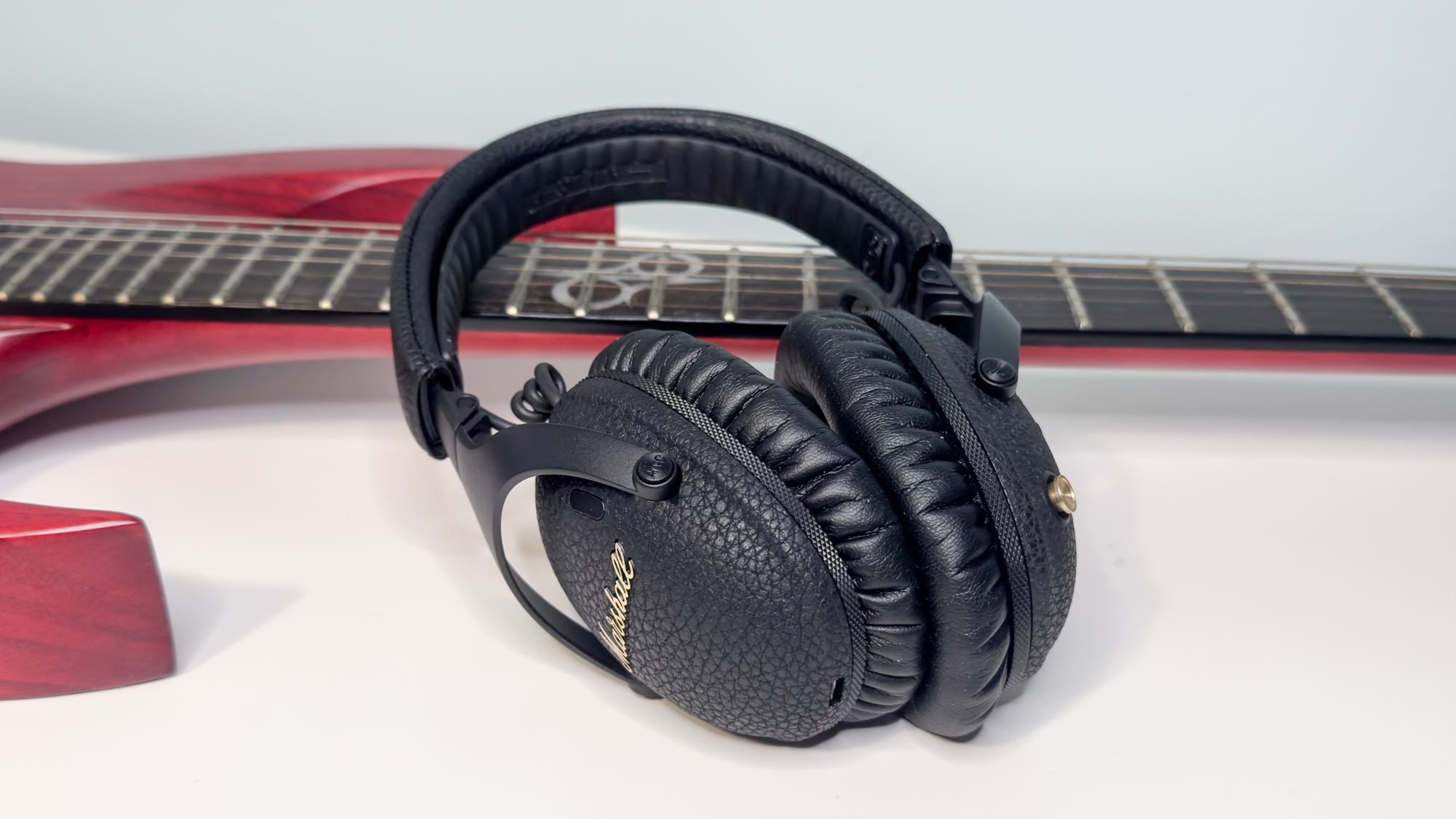

Specifications
Reasons to buy
Reasons to avoid
The Marshall Monitor III are, without a doubt, some of the most comfortable headphones I’ve ever put on my head. They’re incredibly light, and the new foam that Marshall developed for the earpads is very comfortable around my ears. I could wear these headphones for longer than just about any other headset I’ve ever used — and I can use them for that long thanks to their epic battery life.
Generally, I’d expect a pair of Bluetooth headphones to last about 40 hours with their noise canceling turned off. That’s what the Sony WH-1000XM5 manage, and if they get more than that, then they get more attention. The Monitor III get almost double the 40 hours of ANC-less XM5 use with their noise canceling turned on, with a massive 70 hours on tap. If you turn the noise canceling off, you get a miraculous 100 hours, keeping you from plugging in anywhere near as you might otherwise. My testing got around the stated times, with mid-volume and noise canceling turned on.
But that battery life wouldn’t do you any good if they didn’t sound any good for the 70 hours that you can use them for. Thankfully, they sound really, really good, with Marshall's signature rockin’ sound signature keeping them going. They’re a little less warm than some of the other options on the list, but they have what's called a ‘scooped’ tonality. That chops out some of the mids, giving a signature that emphasizes the bass and the treble. The mids are still excellent, of course, and the whole package sounds excellent.
The ANC lets you listen to it without any disturbance as well, although its not quite as good as that found on the top pick of the list. It will still do a solid job of keeping out the noise of your busy office, or the public transport you might have to take to work. Unfortunately, there are a couple of black spots against the Marshalls. There are some creaks and rattles in the construction, and the version of Spatial Audio that comes baked in should be kept in the ‘off’ position at all times, but overall, the Monitor III are an excellent pair of noise canceling headphones that should end up on your buying list.
- Read the full Marshall Monitor III review
Best Under $200
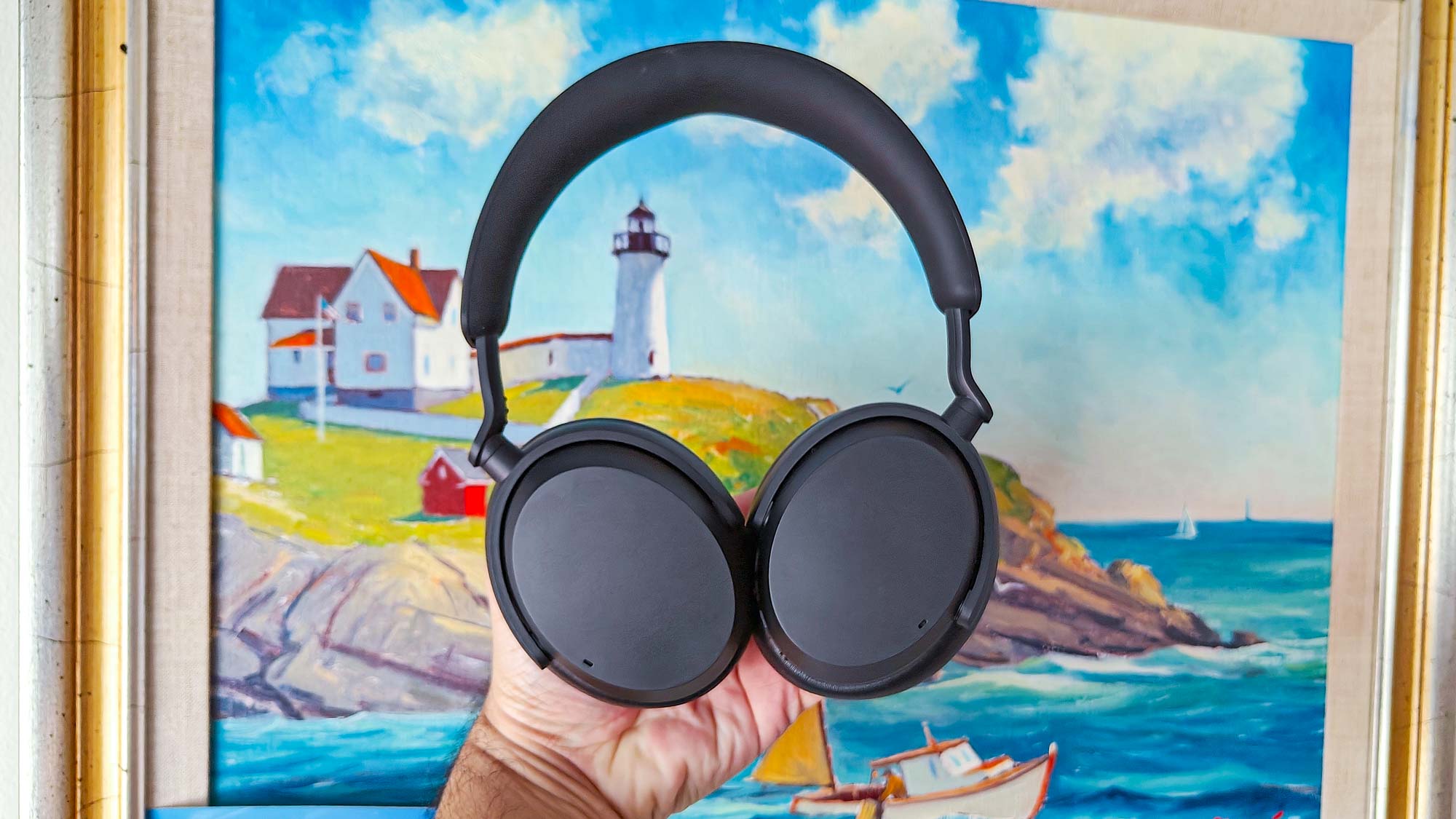

Specifications
Reasons to buy
Reasons to avoid
Sennheisers’ Accentum headphones bring a whole host of the premium features of the far more expensive Momentum 4 headphones to a price point that’s a whole lot easier to swallow. While they might not look the most exciting, they sound like something far more expensive, block out plenty of noise, and feature exemplary battery life which beats out headphones that cost over $100 more.
They cost just $179, bringing them firmly under the $200 price point, and they represent the best package overall for the price. We’ve seen that price drop during deals events as well, bringing them closer and closer to $100 every time. Whatever price you find them at, they’re a top-notch buy. Their noise canceling and sound quality are almost completely unmatched for the price, and they have features that more expensive headphones would envy. Our testing found a pair of headphones with a rich, layered soundscape, with the signature detail that Sennheiser has become well known for. That doesn’t mean that there’s no bass — they have a pleasingly warm sound that many are going to like a lot. They sound like something that costs a whole lot more.
The battery life is another highlight. You get 50 hours with ANC turned on from a single charge, which is more than even the Sony WH-1000XM5 and other headphones that in some cases cost more than twice the price. And you’ll want to use them for that long too, thanks to their comfortable fit. The earcups are nice and wide, and while they can get a little hot if you wear them for longer periods of time, they’re great over long periods. The noise canceling is very good as well, with our reviewer finding loads of really loud noises in and around their home blocked out completely. If you take them on the bus or the train, your commute is going to be a whole lot more tolerable.
It would be nice to get a case in the box, but Sennheiser had to make compromises somewhere so that the headphones sound as good as they do for the price. If you’re looking for something that costs under $200, then the Accentum are an excellent option.
- Read our full Sennheiser Accentum Review
Best sound
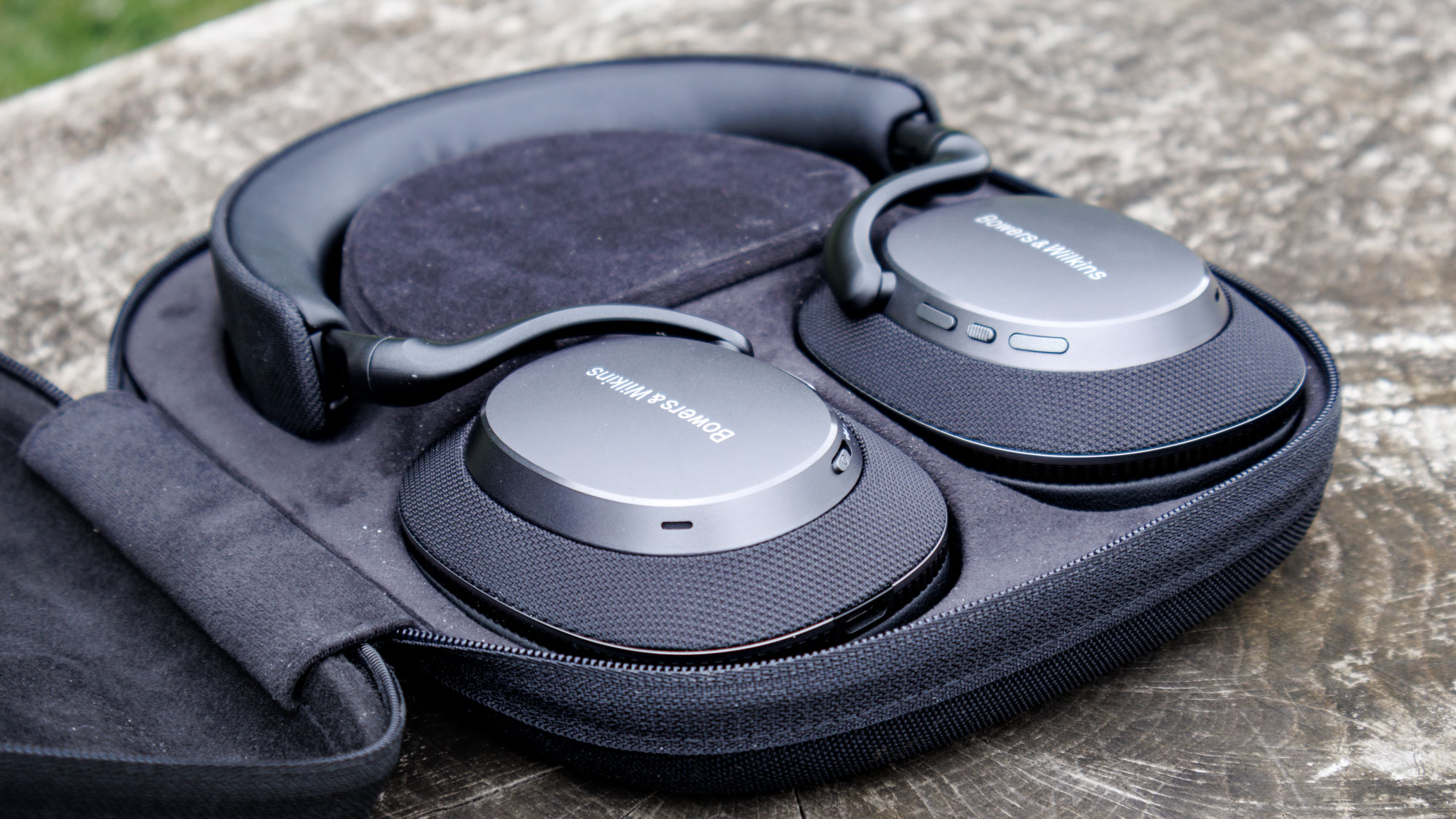

Specifications
Reasons to buy
Reasons to avoid
Bowers & Wilkins went back to the drawing board with the PX7 S3. The result is an incredibly comfortable, super handsome pair of headphones that come in an array of different colors. The sound is the highlight of the headphones, with some of the best audio quality at their price. It exceeds that of even more expensive headphones like the Apple AirPods Max as well, making for a proper HiFi experience on your head.
The bass is super impactful, without being too overpowering. It works perfectly with the excellent mids and clear highs to make a dynamic, well-balanced sound signature that outperforms just about anything wireless you might stack them up against. Thanks to their incredible comfort, you can enjoy that excellent sound quality for long periods of time as well.
There’s loads and loads of padding on the earcups and headband of the PX7 S3, and it makes sure that they aren’t fatiguing, no matter how long you listen to them. I found them more comfortable than the QuietComfort Ultra Headphones in the long run as well, something I wasn’t sure was going to be possible. Those are some comfy headphones.
Battery life is good, the carrying case is sturdy and protective, and then there’s the noise canceling. While it doesn’t quite reach the same heady heights as the Bose QC Ultra or the XM6, it still blocks out plenty of noise. It’s a massive improvement on B&W's older models, and uses the multiple microphones that sit around the circumference of the earcups.
Transparency mode is also very good, making sure that you can hear the world around you when you need to order a sandwich, or buy a bus ticket. While the ANC might not reach the same heights as that from the Bose or Sony option, these are the best way to get top-quality sound that’s uninterrupted by the outside world.
- Read the full Bowers & Wilkins PX7 S3 review
Specs compared
| Header Cell - Column 0 | Connectivity | Weight | Battery life (rated) |
|---|---|---|---|
Bose QuietComfort Ultra Headphones | Bluetooth 5.2 with SBC, AAC, and aptX Adaptive | 8.96 ounces | 24 hours (ANC on) |
JLab JBuds Lux ANC | Bluetooth 5.3 with SBC, AAC | 8.2 ounces | 40 hours (ANC on) |
Sony WH-1000XM6 | Bluetooth 5.4 with SBC, AAC, LDAC | 8.9 ounces | 30 hours (ANC on) |
Marshall Monitor III | Bluetooth 5.3 with AAC and SBC | 8.8 ounces | 70 hours (ANC on) |
Sennheiser Accentum | Bluetooth 5.2 with SBC, AAC, aptX HD | 7.8 ounces | 50 hours (ANC on) |
Bowers & Wilkins PX7 S3 | Bluetooth 5.4 with SBC, AAC, LDAC | 10.5 | 34 hours (ANC on) |
Also tested...
As Tom's Guide's audio experts, we test a lot of noise-cancelling headphones but some models don't make it into a buying guide. That's not to say that they're not great performers, just that they're beaten by rival models with a stronger set of features or performance. The picks in this guide are the very best we've tested and have all been given full reviews. But with more models to choose from than ever, we want to make sure that you consider these also tested options. These alternatives have been through our rigorous testing processes but didn't quite make the grade to rank among the best of the best.
Sony WH-1000XM5: These used to be towards the top of the list — until they where unseated by the newer WH-1000XM6. They still feature incredible noise canceling, mind you, blocking out nearly as much as the Bose option and the newer Sony headphones.
They're comfortable, they sound good — and they've dropped in price since they where first released to make them more affordable as well.
Read the full Sony WH-1000XM5 review
Focal Bathys: French brand Focal's first pair of wireless headphones are a sonic triumph, with some incredible sound quality to match their lofty price. The ANC is also very good, matching the likes of the Sony WH-1000XM5.
This premium pair of headphones is the perfect option for an audiophile looking to get the best sound possible, while still blocking out plenty of noise. They might be expensive, but they're well worth the outlay.
Read the full Focal Bathys review
Sonos Ace: Sonos' first foray into the wireless headphone brought a whole host of new features to the table, mostly to work as home cinema headphones to match your fancy Sonos soundbar. They can connect to the Arc Ultra and other soundbars and play your TV show and movie audio in Dolby Atmos without disturbing the rest of your apartment block.
Their ANC is also good, although it's not quite up there with the likes of the Bose and Sony options. It's still an excellent option should you want something with epic spatial audio and ANC to keep disturbances out.
Read the full Sonos Ace review
Cambridge Audio Melomania P100: Cambridge Audio's ANC cans are a great example of flagship specs and features at a lower price. They also happen to be one of the best sounding wireless headsets that you can buy right now, with a well-balanced sound signature that's sure to please everyone who puts them on their head.
The ANC is very good as well, blocking out plenty of noise. It will do it for a long time as well — there's 60 hours of staying power on tap.
Read the full Melomania P100 review
Bowers & Wilkins Px7 S2e: An 'evolved' version of the company's entry-level headphones, these feel just as good as their predecessor and look identical. They take inspiration and learnings from the company's Px8 flagship headphones, together with a re-tuned acoustic performance and 24-bit digital signal processing (DSP).
In my review, I particularly liked the bass kick they brought to my music, which had a bit more energy than many of their price rivals. The rest of the frequency range felt nicely judged, and noise canceling was effective but not strong enough to outclass similarly priced models in this list.
Bose 700: Superseded by the Bose QC Ultra Headphones awarded the best noise-canceling headphones overall, the 700s were the previous top-ranking model, and maintained that position for more than three years. They are no longer listed on the Bose website, but the 700s continue to be available via online retailers where they can be found discounted. Despite being an older model, these stand up well to rivals and boast 10 levels of ANC that works flawlessly to silence the majority of external sounds. Most importantly, the 700s achieve this without compromising sound quality, allowing listeners to enjoy clean, well-balanced sound reproduction, although the slightly deficient lower frequencies may leave bass fiends feeling short changed. Bose’s companion app lets you adjust the EQ for personalized audio, though.
Read the full Bose 700 review
Yamaha YH-L700: These are an excellent-sounding pair of noise-canceling headphones that have a better 3D sound experience than the AirPods Max. They're equipped with accurate head-tracking technology and multiple well-engineered listening modes for different content. Even with spatial audio turned off, these headphones produce spacious sound with full bass presence, delivering rich lows, palpable mids, and crisp highs. And though Yamaha’s ANC won’t match what Apple, Bose, or Sony offers, it’s still effective to enjoy premium sound in most environments.
You just have to live with its large, heavy design and uneven battery life, which fluctuates when listening with 3D enabled.
Read the full Yamaha YH-L700 review
JBL Live 770NC: JBL's mid-range headset might not win any 'best of' awards, but they excel in one key area — bass. The 770NC have some very powerful low end that rivals the flagship options, giving them plenty of impact when you listen to your music. They look good too, with a cool, modern aesthetic and some classy color options.
It's ANC we're interested in here though, and they're great for blocking out a range of different noises whether you're on the bus or in an office. They are comfortable thanks to their thick padding as well.
Read the full JBL Live 770NC review
How to choose
What to consider when buying the best noise-canceling headphones
Active vs passive noise canceling.
Every single pair of headphones on the list uses ANC, or ‘Active Noise Cancelation’. This uses a series of microphones and a clever algorithm to block out the sounds of the outside world so that you aren’t disturbed by the noises like loud engines, constant tire woosh, or other environmental sounds. These are going to give you the best performance, which is why they’re the only kind that appear on the list. Passive noise canceling is the extent of noise that a pair of headphones might block with the use of ANC — this won’t be as much as a dedicated algorithm and set of noise-canceling microphones.
Battery life
Battery life in noise-canceling headphones has come on leaps and bounds in the last few years. There are some headsets, like the Marshall Monitor III that last as long as 70 hours with ANC turned on, although you’ll mostly find battery life of around 30 hours on the flagships from Sony and others. Generally, if you’re not getting 20 hours out of a pair of headphones, I’d recommend avoiding and choosing something else.
Sound Quality
Previously, sound quality would have been affected by the noise canceling, although that’s becoming less and less a problem as manufacturers work their profiles around ANC tech. You will often hear a low-level hiss with ANC, however, as the ANC tries to counteract the noise of the outside world.
Design & fit
There’s more to the design of a pair of headphones than just the way that they look. After all, styling decisions can sometimes affect the comfort of the headphones, and how they might fit. Generally, most headphones now will use some form of memory foam in their earpads, and breathable materials to make sure they don’t get too hot. If you’re not sure, head to your local headphone stocking store and try some headsets on to see what you like.
Price
As much as it’s always good to get a good deal, there are some things that you need to pay to get. If you want the best thing ever made, you have to pay the outlay to get it. Similarly, if you want something super cheap then there are concessions that you have to make so that you can save money. That’s not to say there aren’t some cheaper options out there — the JBuds Lux are excellent for under $100, for example — but you can’t expect them to hold a candle to something that costs 5x the price. We’d recommend sticking with established brands as while you might pay more, you’ll generally get a much better pair of headphones.
How we test
The best reviews criteria carried out by audio experts
We spend thousands of hours every year testing noise-canceling headphones to make sure that they’re worth your money. We test every single pair of headphones that comes across our testing tables with strict criteria, while also making sure that we consider who might be using them, what they might be using them for, and what they might want from them. After all, while one person might want a pair of headphones that’s perfect for their office, another might want some that are going to serve them better for an hour-long commute on a metro train. We make sure we test the headphones in a variety of different environments where they might find themselves for a more holistic testing approach.
Of course, one of the most important parts of any pair of headphones is going to be the way that they sound. We test the headphones with a variety of different genres, from heavy metal to classical, and evaluate their audio performance accordingly. We also listen to podcasts and watch movies where applicable for a greater picture of the headphone's audio quality.
Durability is important as well. Cases should be able to withstand some punishment and wireless headphones should be able to leave the house without concern, so we make sure to test the speakers in all different use cases so that we know how they’re going to fare in the real world. How does the hard case hold up to being packed into a backpack? What happens if the headphones fall onto the office floor? We want to make sure that your headphones will survive normal, everyday use.
Then we check their comfort. Throughout testing, we wear the headphones while we work, while we commute, and while we relax to make sure that they’re comfortable enough for longer periods of use. We make note of our experiences so that we can talk about it in our reviews — and so that you know if you’ll be comfortable wearing them.
Battery life is another important thing for us to test. We charge the headphones up to full, turn on the ANC, and then run them down completely with a timer on to make sure that the manufacturer's claims are accurate. Then, we test based on higher volume levels and with different levels of ANC to see how using them can affect the battery, and whether they last long enough for a recommendation.
Once we’ve finished testing, and the review is written, the headphones are marked on our five-star system. A 1-star pair of headphones should be avoided at all costs. A 2-star pair of headphones works, but there are much better options out there. A 3-star pair of headphones is a good pair, but you should consider some of the competition as well. A 4-star pair is an excellent set of headphones, with very few issues. A 5-star rating is reserved for perfect products, that don’t have any drawbacks. They should be at the top of your consideration list.
Check out how we test for information about our testing process.
More from Tom's Guide
- My top 5 wireless earbud picks for every budget
- 5 best headphones for working from home
- The best cheap headphones for all kinds of travel
Get instant access to breaking news, the hottest reviews, great deals and helpful tips.

Tammy and her generous collection of headphones have found a new home — Tom's Guide! After a two-and-a-half-year stint as iMore's resident audiophile, Tammy's reviews and buying guide expertise have more focus than ever on Tom's Guide, helping buyers find the audio gear that works best for them. Tammy has worked with some of the most desirable audio brands on the planet in her time writing about headphones, speakers, and more, bringing a consumer focussed approach to critique and buying advice. Away from her desk, you'll probably find her in the countryside writing (extremely bad) poetry, or putting her screenwriting Masters to good use creating screenplays that'll never see the light of day.
